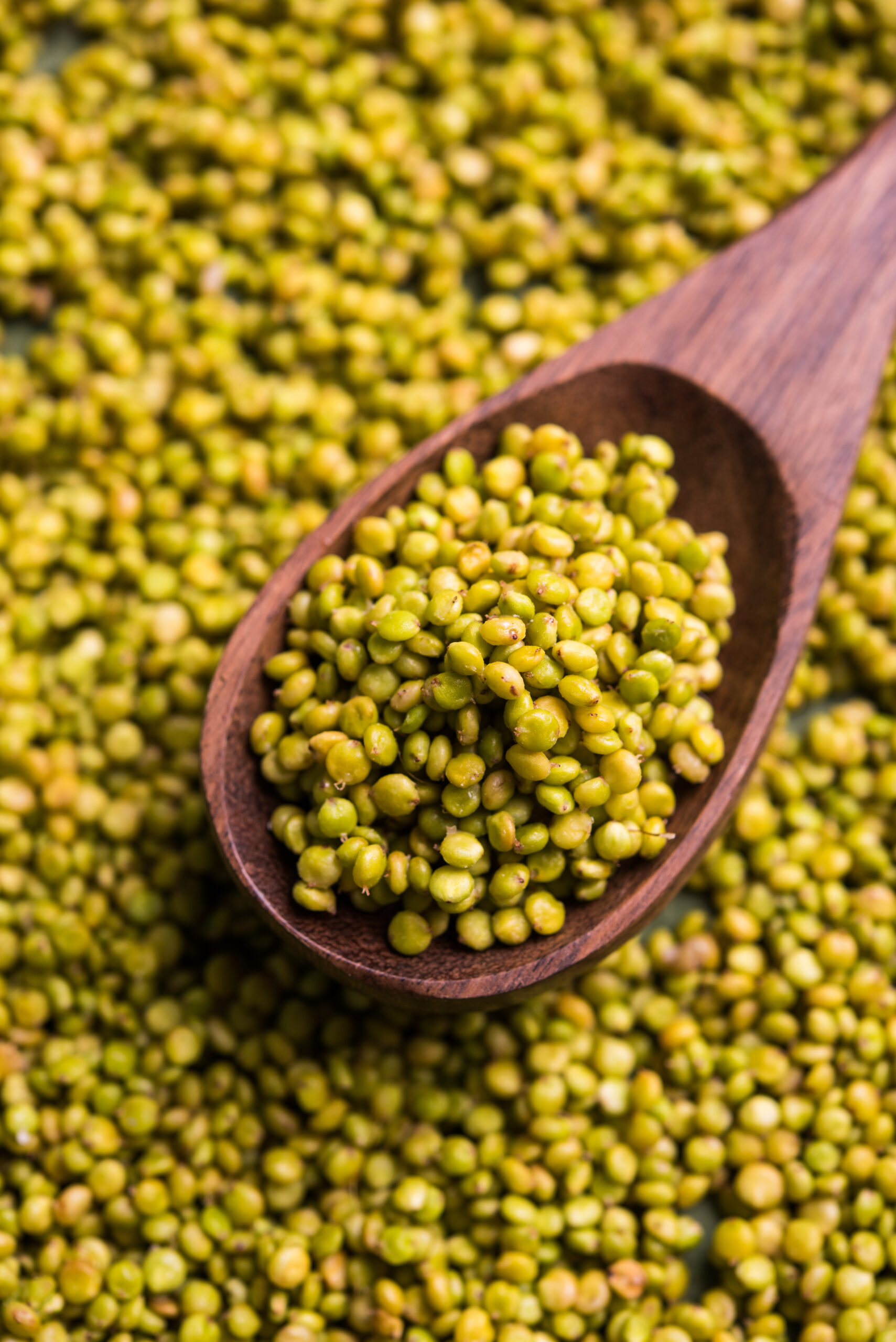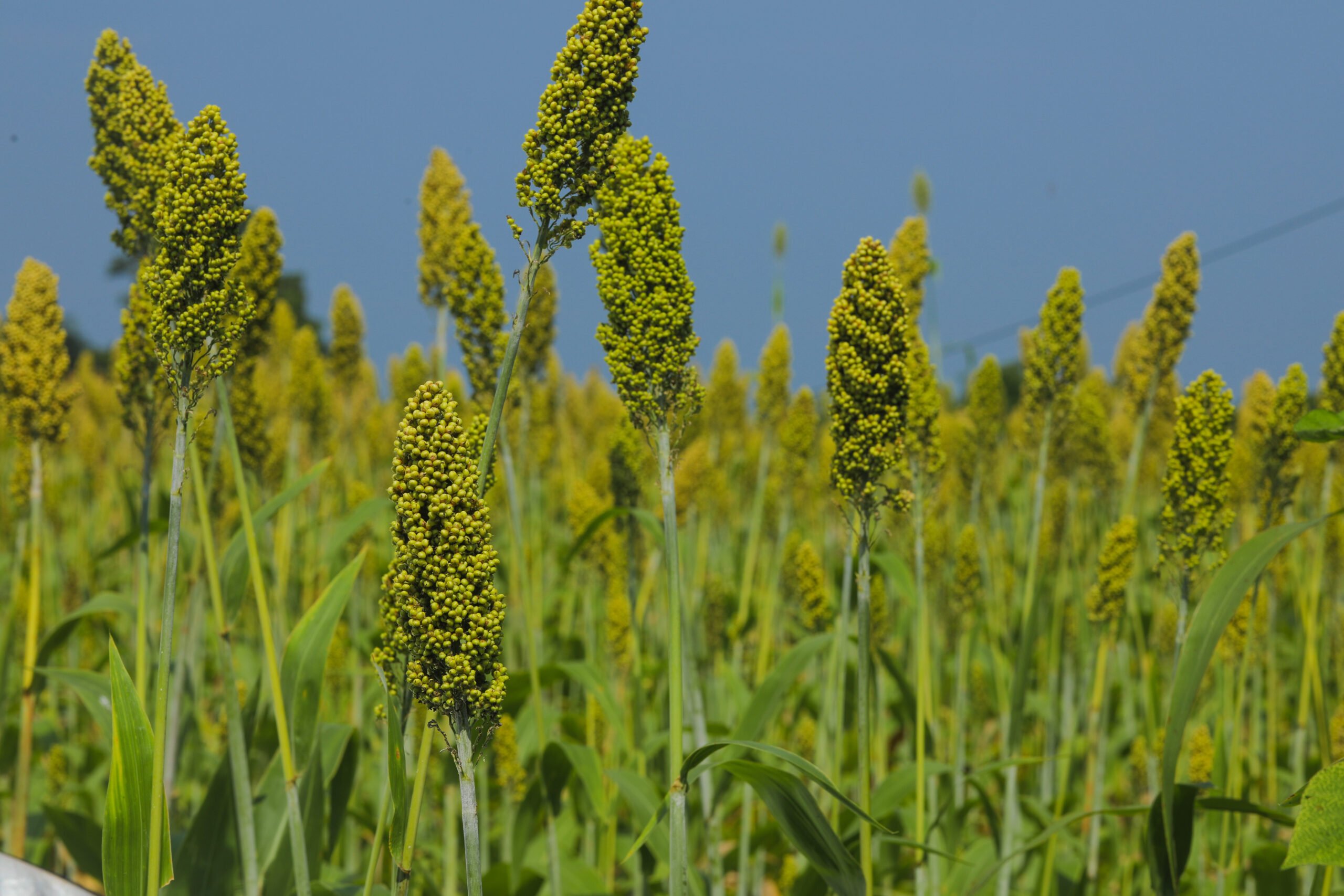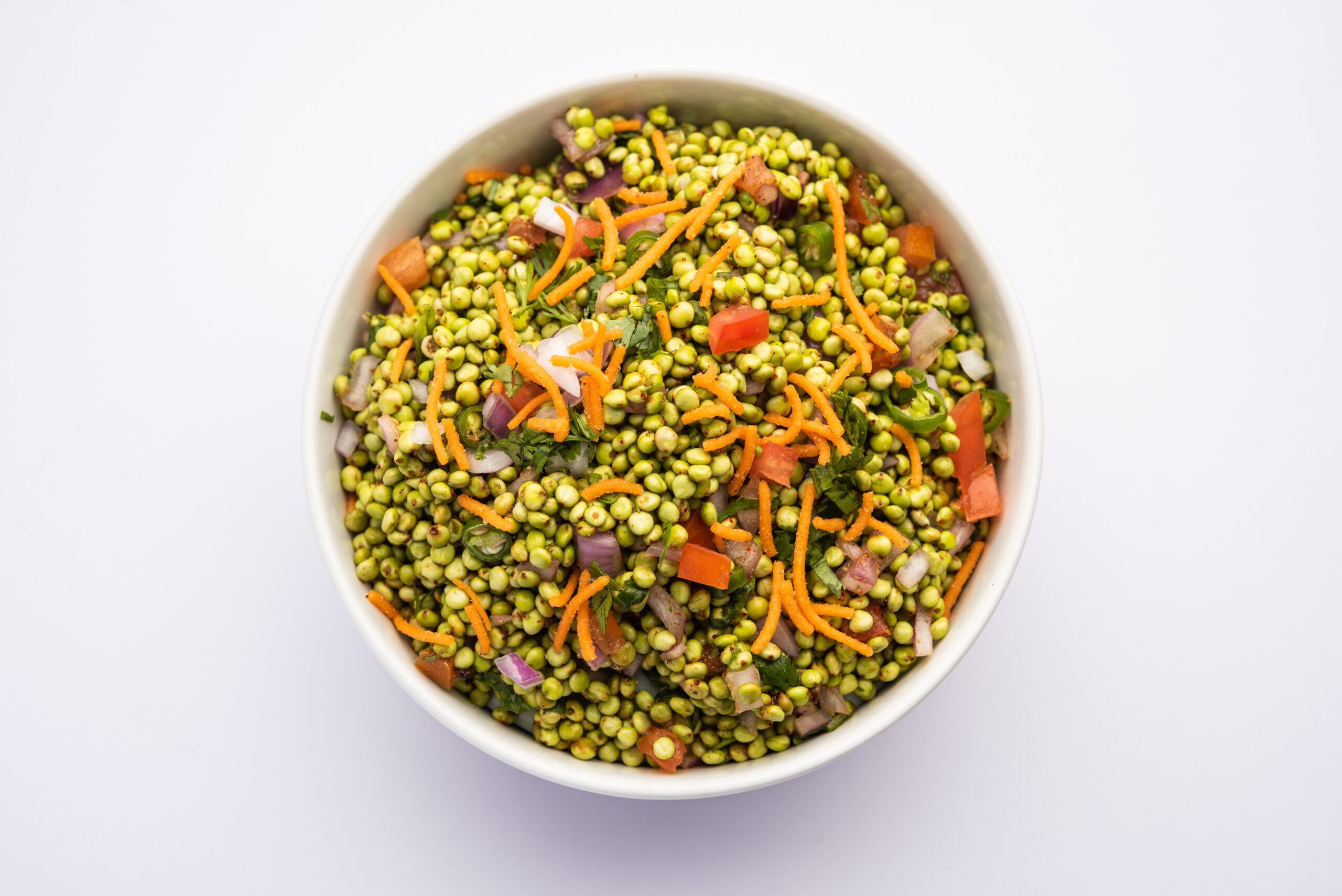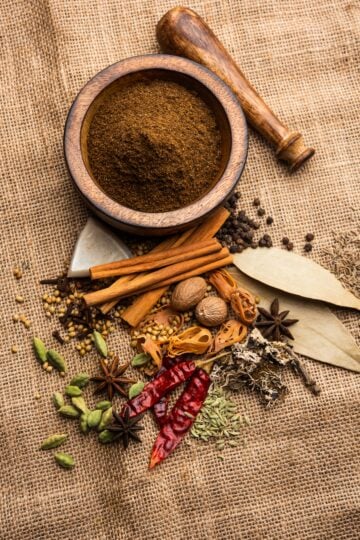
Once a staple in traditional kitchens, jowar (also known as sorghum) is now winning hearts on trendy café menus and health-conscious grocery lists. It’s ancient, yes—but far from outdated. With its nutty flavor, natural gluten-free profile, and solid nutritional punch, this grain is making a quiet, confident comeback in modern cooking.
Whether you're tossing it into a salad, baking with its flour, or trying it in a warm grain bowl, jowar offers both versatility and value.
What Exactly Is Jowar?
Jowar, also known as sorghum, is a small, round ancient grain that’s been grown for centuries in parts of Africa and Asia. It thrives in hot, dry climates, which makes it a reliable crop in regions with less rainfall. While it's been a dietary staple in countries like India, Ethiopia, and Nigeria, it’s now gaining traction in the global health food scene.
What makes jowar stand out is its natural gluten-free composition, making it a go-to for people with celiac disease or those avoiding gluten. It can be eaten whole like rice, popped like popcorn, or ground into a flour that’s used in everything from flatbreads to baked goods.
Quick Facts About Jowar (Sorghum)
- What it is: An ancient gluten-free grain, also called sorghum
- Flavor: Mild, earthy, slightly nutty taste
- Best in: Flatbreads (jowar roti), porridges, salads, baked goods
- Nutrients: High in fiber, iron, protein, and antioxidants
- Health note: Supports digestion, heart health, and is a good gluten-free option
- Storage: Store flour or whole grains in an airtight container, cool and dry; use within 3–6 months
Forms You Will Find It In
Jowar comes in a few easy-to-use forms, each with its own purpose in the kitchen:
-
Whole Jowar Grains: These look like tiny beige pearls and can be cooked like quinoa or rice. Great for salads, stews, or warm breakfast bowls.
-
Jowar Flour (Sorghum Flour): Finely ground and naturally gluten-free, this is widely used for flatbreads like rotis and also works well in baking when blended with other flours.
-
Flaked Jowar: Similar to rolled oats, these are flattened jowar grains that cook quickly and can be used in porridge or granola-style mixes.
-
Popped Jowar: Light and crunchy, popped jowar is a healthy snack that works just like popcorn. Just add a touch of salt or spice and you’re good to go.
-
Sorghum Syrup (rare, mostly in the US South): A thick, dark sweetener made from jowar stalks, traditionally used in Southern American cooking.
Each form has its own texture and flavor profile, so there’s always a new way to try it depending on your recipe or mood.

What Does It Taste Like?
Jowar has a mild, earthy flavor with a slightly nutty undertone. It’s not bold or overpowering, which makes it a great base for both savory and sweet dishes. Think of it like a cross between brown rice and barley—hearty, but with a clean finish that easily takes on the flavors of whatever you cook it with.
Culinary Uses Around the World
Jowar might be rooted in tradition, but it’s anything but one-dimensional. From rural farms to modern fusion kitchens, this grain adapts to many styles of cooking across continents.
-
India: It’s best known for jowar rotis—soft, slightly crisp flatbreads often paired with lentils or vegetables. You’ll also find it in hurda-ponkh-bhel, upma, laddoos, and lightly spiced porridge.
-
Africa: In countries like Ethiopia and Sudan, sorghum is used to make fermented breads, thick porridges, and even local beers. It’s a staple in many regional dishes due to its drought-resistant nature.
-
United States & Europe: With the rise of gluten-free eating, sorghum is now showing up in grain bowls, muffins, crackers, and even pasta alternatives. Whole jowar grains are cooked like quinoa or added to soups for a chewy bite.
-
Middle East: Occasionally blended into flours for flatbreads or couscous-like dishes, especially in rural areas.


Cooking With Jowar
Jowar is incredibly flexible once you know how to handle it. Here's how to work with the different forms:
Whole Jowar Grains:
- Soak overnight to reduce cooking time
- Boil like brown rice until tender (about 40–50 minutes)
- Great for grain bowls, salads, soups, or as a rice substitute
Jowar Flour (Sorghum Flour):
- Commonly used in rotis, flatbreads, and pancakes
- Doesn’t rise like wheat flour—best mixed with other flours for baking
- Toast lightly before use to enhance its nutty flavor
Popped Jowar:
- Dry roast in a hot pan—no oil needed
- Add a pinch of salt or spice for a quick, healthy snack
- Can be used in homemade energy bars or trail mix
Flaked Jowar (if available):
- Cooks quickly, like rolled oats
- Use in porridge, granola, or muesli-style mixes
Quick Tips to Get the Best Out of It
-
Use broth instead of water when boiling jowar for extra flavor
-
Add binders like flaxseed or psyllium husk when baking with pure jowar flour
-
For crispier rotis, mix jowar flour with hot water and knead while warm
Creative Ways to Use Jowar Beyond the Basics
Ready to do more than just roll rotis? Jowar’s subtle flavor and hearty texture make it a great ingredient for a variety of dishes you might not expect.
-
Jowar Pancakes or Waffles:
Swap in jowar flour with a bit of baking soda and yogurt for fluffy, gluten-free breakfast treats. -
Energy Bars & Snack Balls:
Combine popped jowar with dates, nuts, and a touch of jaggery or honey for homemade energy bites. -
Hearty Grain Bowls:
Use cooked whole jowar as the base for a warm grain bowl topped with roasted veggies, a fried egg, or spicy chickpeas. -
Gluten-Free Pizza Crusts or Wraps:
Mix jowar flour with tapioca or rice flour for a firm but flexible base you can roll or bake. -
Granola with a Twist:
Toss flaked or popped jowar with nuts, seeds, and maple syrup for a crunchy, nutrient-rich granola. -
Soup or Stew Thickener:
Stir in a spoonful of jowar flour to thicken broths and give them a rustic, wholesome edge.
These ideas let jowar shine in totally new settings—all without complicating your cooking.
Flavor Pairings
Jowar’s earthy, nutty taste blends easily with both subtle and bold flavors.
Savory: Ghee with garlic and cumin, olive oil with lemon and herbs, roasted veggies with tahini, or tomato with smoked paprika.
Sweet: Jaggery or honey for rotis, coconut with cardamom and dates for snacks, or apple with cinnamon and nuts in porridge.
Its neutral profile soaks up spices, herbs, and sauces—making it fit into almost any dish.
Jowar Substitutes
Can’t find jowar at your local store? No problem. Here are some easy swaps depending on what you're making:
For Whole Jowar Grains:
- Pearl millet (bajra): Similar chew and earthy flavor
- Brown rice or quinoa: Good texture match in salads or grain bowls
- Barley: Slightly softer, but works well in soups and stews
For Jowar Flour:
- Bajra flour or ragi flour: Both are gluten-free and used similarly in Indian-style flatbreads
- Millet flour: Mild in taste, great for baking blends
- Oat flour: Slightly sweeter but blends well in muffins, pancakes, or porridge-style recipes
- Buckwheat flour: Earthy and dense—best when combined with lighter flours
Always keep in mind that jowar flour doesn’t behave exactly like wheat flour, so substitutions in baking may need a little experimenting to get the texture just right.
How to Store It Right
Jowar is pretty low maintenance, but like most whole grains and flours, it needs the right storage to stay fresh and flavorful.
Whole Jowar Grains:
- Store in an airtight container in a cool, dry place
- Keep away from moisture and sunlight to prevent spoilage
- For long-term storage, pop it in the fridge or freezer to extend shelf life (up to 6 months)
Jowar Flour:
- Best kept in the refrigerator in an airtight container
- Use within 4–6 weeks for best flavor, especially if it’s freshly milled
Popped or Flaked Jowar:
- Store like cereal or granola—sealed tight and away from humidity
- Use within 2–3 weeks for crunch and taste
- A quick sniff test is often enough—if it smells musty or sour, it’s time to toss it.
Nutritional Value (Per 1 Cup Cooked)
Jowar isn’t just filling—it’s nutrient-dense too. Here's what you typically get in 1 cup of cooked whole jowar (about 170g):
-
Calories: ~180
-
Protein: ~6 grams
-
Fiber: ~3–4 grams
-
Carbohydrates: ~39 grams
-
Fat: ~1 gram (mostly unsaturated)
-
Iron: ~1.7 mg (about 9% of daily value)
-
Magnesium: ~60 mg (15% of daily value)
-
B Vitamins: Contains small amounts of niacin, thiamine, and riboflavin
-
Antioxidants: Contains polyphenols and plant compounds that may support overall wellness
Health Benefits of Jowar
Jowar isn’t just filling—it’s functional. Packed with fiber, minerals, and slow-digesting carbs, it may offer several health perks when included as part of a balanced diet.
-
Supports Digestive Health
Thanks to its fiber content, jowar may help keep your digestive system running smoothly and reduce constipation (Source). -
May Help Manage Blood Sugar
The complex carbs in jowar digest slowly, which can lead to steadier blood sugar levels—especially helpful for people managing insulin sensitivity (Source). -
Naturally Gluten-Free
For anyone avoiding gluten, jowar offers a safe, hearty option without compromising on nutrition or flavor (Source). -
Can Support Energy Levels
With its iron content and steady-release carbs, jowar may help combat energy dips throughout the day (Source). -
Heart-Friendly Nutrients
Jowar contains magnesium and antioxidants, which may support heart health by helping regulate blood pressure and protecting cells from oxidative stress (Source). -
May Aid in Weight Management
High-fiber foods like jowar can keep you full longer, which may reduce unnecessary snacking or overeating (Source).Potential Health Risks
Jowar is generally safe and well-tolerated by most people, but like any ingredient, it’s good to know a few potential concerns—especially if you're adding it to your diet for the first time.
- May Cause Bloating or Gas:
Its high fiber content can lead to bloating or digestive discomfort if your body isn’t used to it. Start with small portions and increase gradually (Source). - Oxalates and Anti-Nutrients (Minimal Risk):
Like many grains, jowar contains small amounts of natural compounds that may slightly reduce mineral absorption. Cooking or soaking usually takes care of this (Source). - Allergies (Rare but Possible):
Though uncommon, some people can have sensitivities or allergies to sorghum. If you're trying it for the first time, monitor for any unusual symptoms (Source).
Final Thoughts
Jowar may have ancient roots, but it fits beautifully into modern kitchens. Whether you're cooking for health, flavor, or curiosity, this versatile grain has plenty to offer—from hearty meals to creative twists on everyday recipes.
It’s gluten-free, easy to pair with other ingredients, and full of nutrients that your body may appreciate. So if you haven’t tried jowar yet, this might just be the grain worth exploring.
Give it a shot—you might be surprised how easily it earns a spot in your weekly lineup.
FAQs
Is jowar gluten-free?
Yes, jowar is naturally gluten-free, making it a safe choice for people with celiac disease or gluten sensitivity.
Can I eat jowar every day?
You can, especially when it's part of a balanced diet. Just introduce it slowly if you’re not used to high-fiber grains.
How do I cook whole jowar?
Soak it overnight, then boil it in water (or broth) for about 40–50 minutes until tender. Use it like rice or quinoa.
Can jowar flour replace wheat flour in baking?
Not directly. It works best when mixed with other flours and binders, especially in recipes like pancakes or flatbreads.
What’s the difference between jowar and bajra?
Both are ancient millets, but jowar is lighter in flavor and color. Bajra (pearl millet) has a bolder, nuttier taste.
Learn More About Jowar (Sorghum)
Wikipedia – Sorghum
This article explains what sorghum (also called jowar) is, its major cultivation regions, key uses in food and feed, unique nutritional profile, and how it differs from other grains in terms of drought-resistance and environmental adaptability.
Aashirvaad – Sorghum or Jowar Benefits, Nutrition, & Side Effects
This article outlines the nutritional benefits of jowar (sorghum)—highlighting its high fiber, protein, and mineral content—while covering its culinary uses like flour and porridge, traditional and modern recipes, and potential side effects such as anti-nutrient content and digestive concerns.






Have a question or something to share? Leave a comment below!